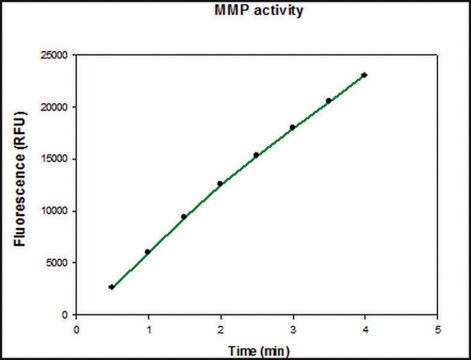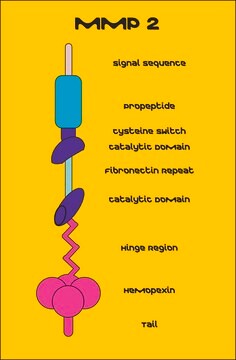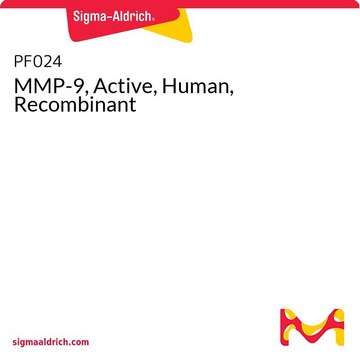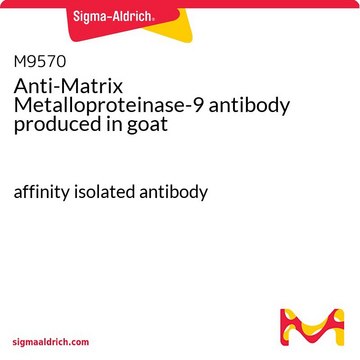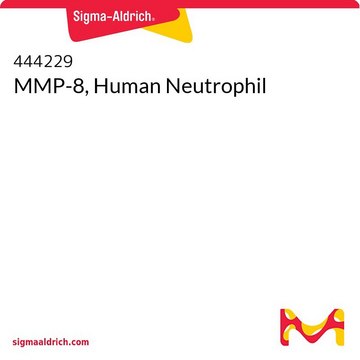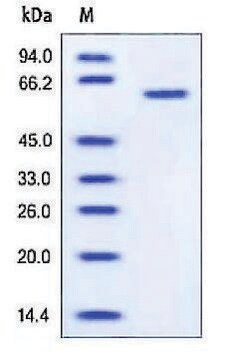SAE0077
MMP-9 human
recombinant, ≥1,300 pmol/min/μg, expressed in HEK 293 cells
Synonim(y):
GELBCLG4B, Gelatinase, Gelatinase B, MANDP2, MMP-9, Matrix Metalloproteinase-9, Type IV collagenase
About This Item
Polecane produkty
pochodzenie biologiczne
human
Poziom jakości
rekombinowane
expressed in HEK 293 cells
Próba
95% (SDS-PAGE)
Postać
liquid
masa cząsteczkowa
calculated mol wt 76 kDa
observed mol wt 92 kDa (The protein migrates as a 92 kDa protein on SDS-PAGE due to glycosylation)
stężenie
50-200 μg/mL
numer dostępu UniProt
Zastosowanie
cell analysis
Warunki transportu
dry ice
temp. przechowywania
−20°C
informacje o genach
human ... MMP(4318)
Opis ogólny
Działania biochem./fizjol.
MMP-9 is secreted from neutrophils, macrophages, and a number of transformed cells, and is the most complex family member in terms of domain structure and regulation of its activity.
Structurally, MMP9 maybe be divided into five distinct domains: a pro-domain which is cleaved upon activation, a gelatin binding domain consisting of three contiguous fibronectin type II units, a catalytic domain containing the zinc binding site, a proline rich linker region, and a carboxyl terminal hemopexin like domain.
Inne uwagi
Postać fizyczna
Kod klasy składowania
12 - Non Combustible Liquids
Klasa zagrożenia wodnego (WGK)
WGK 1
Temperatura zapłonu (°F)
Not applicable
Temperatura zapłonu (°C)
Not applicable
Certyfikaty analizy (CoA)
Poszukaj Certyfikaty analizy (CoA), wpisując numer partii/serii produktów. Numery serii i partii można znaleźć na etykiecie produktu po słowach „seria” lub „partia”.
Masz już ten produkt?
Dokumenty związane z niedawno zakupionymi produktami zostały zamieszczone w Bibliotece dokumentów.
Klienci oglądali również te produkty
Nasz zespół naukowców ma doświadczenie we wszystkich obszarach badań, w tym w naukach przyrodniczych, materiałoznawstwie, syntezie chemicznej, chromatografii, analityce i wielu innych dziedzinach.
Skontaktuj się z zespołem ds. pomocy technicznej